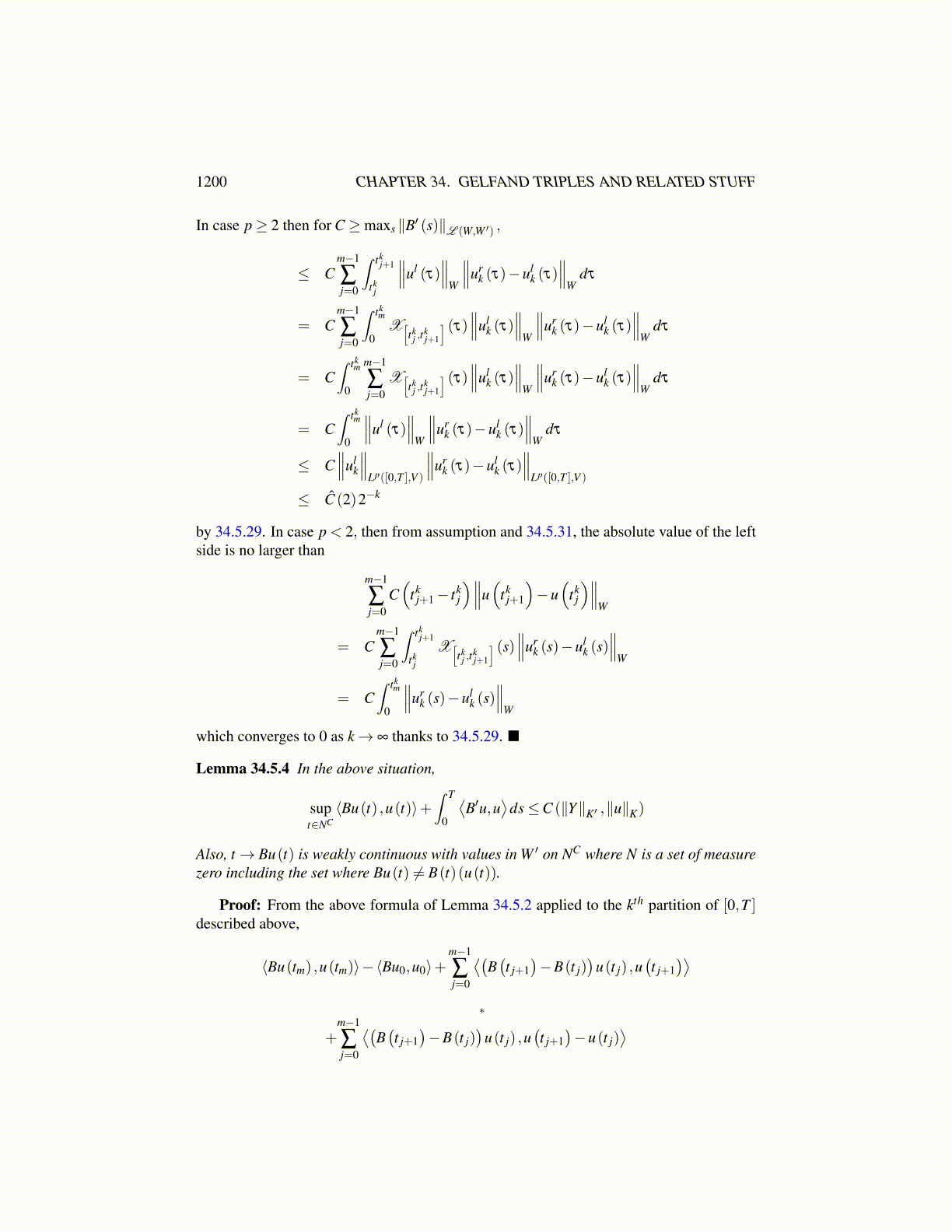
1200 CHAPTER 34. GELFAND TRIPLES AND RELATED STUFF
In case p≥ 2 then for C ≥maxs ∥B′ (s)∥L (W,W ′) ,
≤ Cm−1
∑j=0
∫ tkj+1
tkj
∥∥∥ul (τ)∥∥∥
W
∥∥∥urk (τ)−ul
k (τ)∥∥∥
Wdτ
= Cm−1
∑j=0
∫ tkm
0X[
tkj ,t
kj+1
] (τ)∥∥∥ulk (τ)
∥∥∥W
∥∥∥urk (τ)−ul
k (τ)∥∥∥
Wdτ
= C∫ tk
m
0
m−1
∑j=0
X[tkj ,t
kj+1
] (τ)∥∥∥ulk (τ)
∥∥∥W
∥∥∥urk (τ)−ul
k (τ)∥∥∥
Wdτ
= C∫ tk
m
0
∥∥∥ul (τ)∥∥∥
W
∥∥∥urk (τ)−ul
k (τ)∥∥∥
Wdτ
≤ C∥∥∥ul
k
∥∥∥Lp([0,T ],V )
∥∥∥urk (τ)−ul
k (τ)∥∥∥
Lp([0,T ],V )
≤ Ĉ (2)2−k
by 34.5.29. In case p < 2, then from assumption and 34.5.31, the absolute value of the leftside is no larger than
m−1
∑j=0
C(
tkj+1− tk
j
)∥∥∥u(
tkj+1
)−u(
tkj
)∥∥∥W
= Cm−1
∑j=0
∫ tkj+1
tkj
X[tkj ,t
kj+1
] (s)∥∥∥urk (s)−ul
k (s)∥∥∥
W
= C∫ tk
m
0
∥∥∥urk (s)−ul
k (s)∥∥∥
W
which converges to 0 as k→ ∞ thanks to 34.5.29.
Lemma 34.5.4 In the above situation,
supt∈NC⟨Bu(t) ,u(t)⟩+
∫ T
0
⟨B′u,u
⟩ds≤C (∥Y∥K′ ,∥u∥K)
Also, t→ Bu(t) is weakly continuous with values in W ′ on NC where N is a set of measurezero including the set where Bu(t) ̸= B(t)(u(t)).
Proof: From the above formula of Lemma 34.5.2 applied to the kth partition of [0,T ]described above,
⟨Bu(tm) ,u(tm)⟩−⟨Bu0,u0⟩+m−1
∑j=0
⟨(B(t j+1
)−B(t j)
)u(t j) ,u
(t j+1
)⟩
+
∗m−1
∑j=0
⟨(B(t j+1
)−B(t j)
)u(t j) ,u
(t j+1
)−u(t j)
⟩